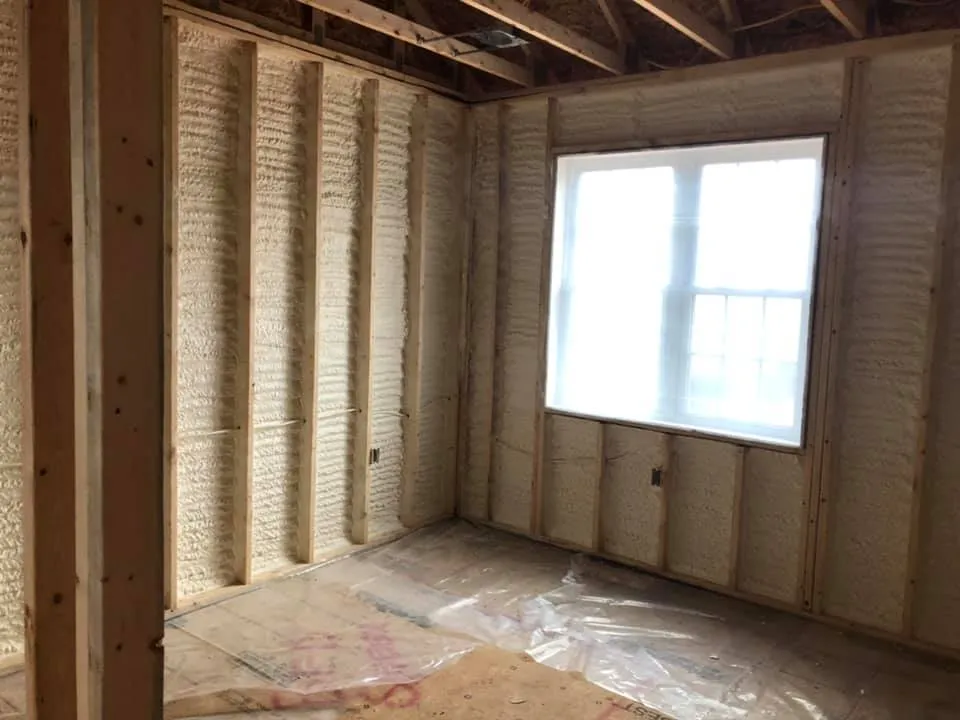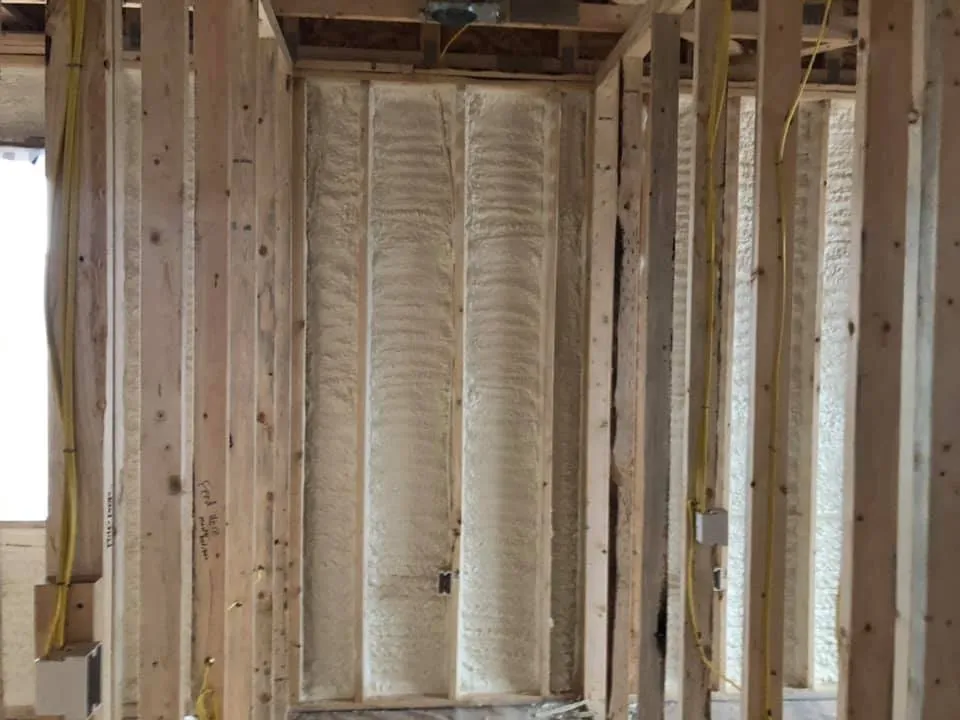
Spray foam insulation helps Columbus homes and commercial buildings maintain indoor temperature stability during prolonged cold spells by minimizing heat loss, sealing air gaps, and resisting moisture intrusion. Closed-cell and open-cell spray foams offer superior insulation performance compared to traditional methods, delivering consistent R-values and structural reinforcement in low temperatures.
In a region where winter lows regularly fall below 20°F (NOAA 2023), inadequate insulation leads to higher heating demands, ice dam formation, and moisture buildup. Spray foam addresses these issues by forming a continuous thermal envelope that prevents cold air infiltration and indoor heat escape. Ohio Valley Spray Foam applies spray foam solutions that align with regional climate stressors, providing practical, field-tested protection strategies.
Spray foam maintains stable R-values even in freezing conditions, unlike fiberglass which can degrade when compressed or dampened.
| Insulation Type | Winter R-Value per Inch | Air Sealing Capability | Moisture Resistance | Durability in Cold |
|---|---|---|---|---|
| Closed-Cell Spray Foam | 6.5 – 7.0 | Excellent | High | High |
| Open-Cell Spray Foam | 3.5 – 3.8 | Very Good | Moderate | Good |
| Fiberglass Batts | 2.9 – 3.7 | Poor | Low | Moderate |
| Blown-In Fiberglass | 2.2 – 2.9 | Poor | Low | Low |
Bonus Tip: Closed-cell spray foam adds structural strength to framing members, especially beneficial in pole barns or older homes facing snow load stress.
Columbus winters bring not only sub-zero nights but freeze-thaw fluctuations that force moisture into wall cavities and attics. Spray foam’s impermeable structure (closed-cell) or semi-permeable breathability (open-cell) helps mitigate risks of mold growth, insulation saturation, and wood rot.
| Product Type | Vapor Barrier | Mold Resistance | Application Suitability |
|---|---|---|---|
| Closed-Cell Spray Foam | Yes | High | Attics, Walls, Crawlspaces |
| Open-Cell Spray Foam | Partial | Moderate | Interior Walls, Ceilings |
| Blown-In Fiberglass | No | Low | Requires Ventilation Management |
Bonus Tip: Use open-cell spray foam on interior walls paired with a vapor retarder for improved performance without trapping humidity.
Spray foam forms a continuous barrier, reducing the need for prolonged HVAC cycles. According to the U.S. Department of Energy, buildings lose up to 40% of their energy through air leaks. Sealing with spray foam directly counters this loss.
“Homes with properly installed spray foam insulation can reduce heating costs by 20-30% in cold climates.” — U.S. Department of Energy, 2024 Residential Energy Efficiency Report

Bonus Tip: Inspect existing insulation for compression or discoloration; signs of air leakage often appear at attic hatches, rim joists, and around recessed lighting.
Ohio Valley Spray Foam applies the following insulation types, each suited to Columbus’s severe winters:
Focus on attic floors, rim joists, crawlspaces, and exterior wall cavities. These leak the most heat.
Old insulation should be removed for proper adhesion and sealing. Evaluate case by case.
Closed-cell has a higher upfront cost but provides better air sealing and moisture control, reducing maintenance needs.
Most residential projects are completed in one day, depending on area and prep requirements.
Spray foam offers the most reliable defense against Columbus’s prolonged cold and shifting moisture conditions. Closed-cell provides high resistance to air and moisture; open-cell balances insulation with breathability. The insulation choice should reflect structural needs, humidity exposure, and performance expectations over time.
For tailored recommendations based on building design and exposure conditions, contact Ohio Valley Spray Foam. Call (740) 373-3626 or email [email protected] to discuss the most effective insulation approach for your structure. Guidance includes material compatibility, application timing, and performance expectations based on regional demands.
Spray foam lasts for decades if protected from UV light and mechanical damage. No settling occurs, unlike loose-fill options.
No, unless damaged or disturbed during remodeling. Initial installation quality is key.
Spray foam does not attract pests but can be tunneled if entry points exist. Seal all openings.
Once cured, spray foam is inert and does not release emissions. Proper ventilation during install is required.